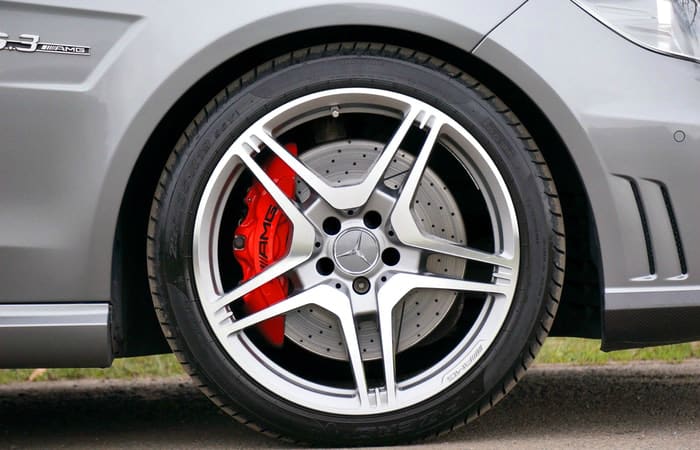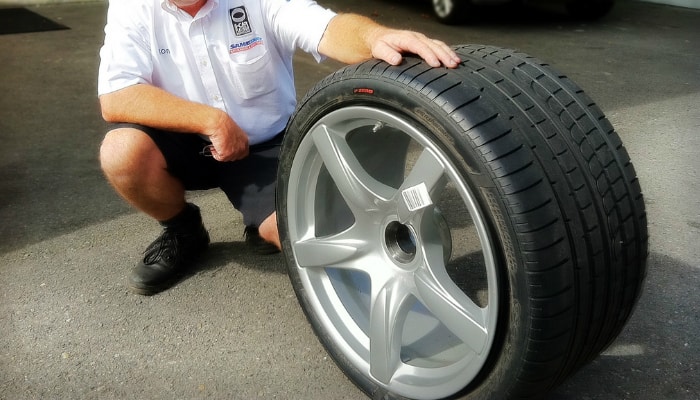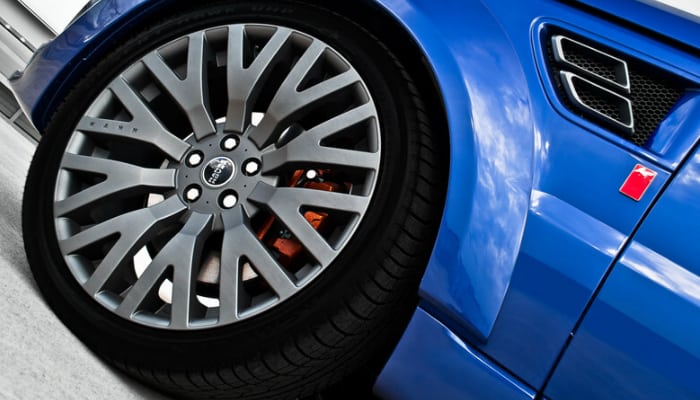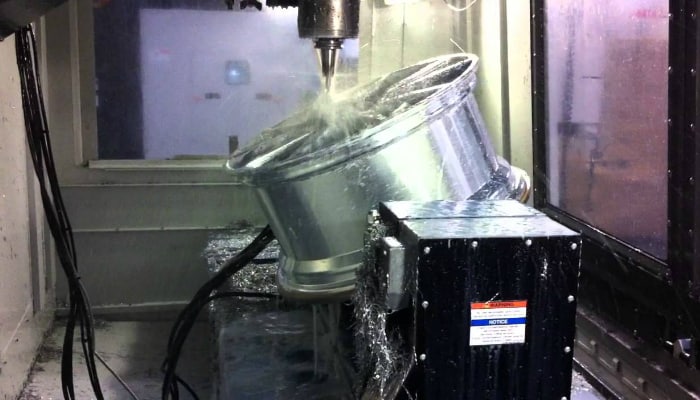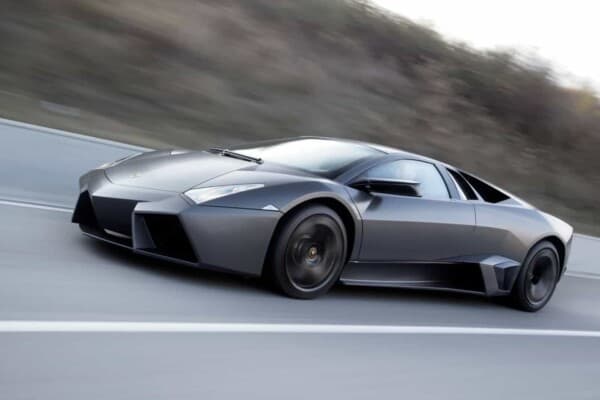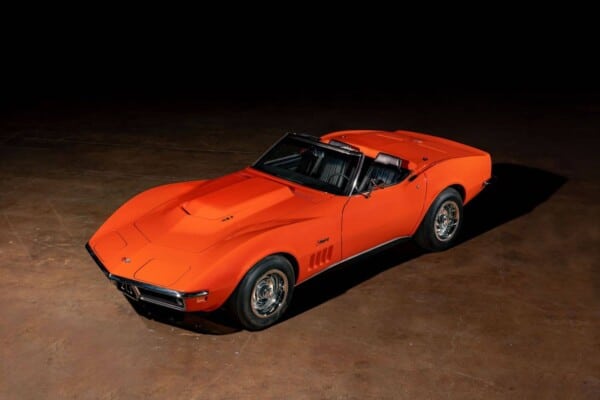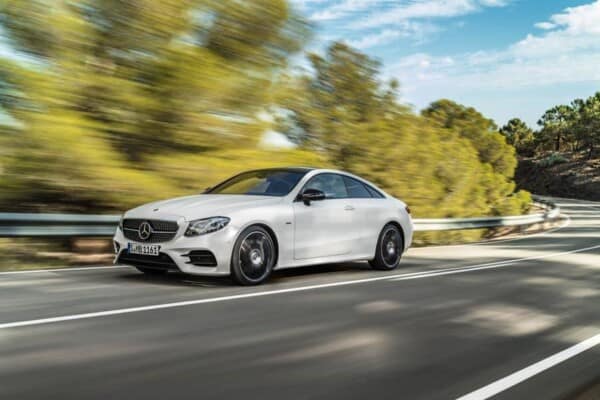The simplest way to explain what alloy wheels are is that these are wheels composed of magnesium or aluminum alloy. But, what exactly is alloy? The straightforward answer is that alloy is a metal mixed with other elements. Regarding the purpose of alloy, it is stronger than pure metals. Pure metals are softer and more pliable.
For a more in-depth explanation of alloy wheels, we are giving you essential details about these special car parts.
History
Popular historical facts about alloy wheels are based on the emergence of magnesium and aluminum wheels.
Magnesium Alloy Wheels
Magnesium alloys are the first metals to be transformed into lightweight alloy wheels. In the 1960s, they captured the attention of car enthusiasts. However, later in that decade, they lost popularity because their tremendous strength could create worse damage in case of a violent impact. They could shatter to thousands of tiny pieces. Fortunately, they were meticulously developed in the modern years to have significant improvements.

Aluminum Alloy Wheels
After magnesium alloy wheels’ fame, aluminum alloys took the scene with their less brittle feature. Sadly, they could not be stretched easily caused by their low ductility. Either way, they still proved their worth with their affordability and excellent overall quality as they became in demand in the world of motorsports.

Purpose
Now, why are alloy wheels so special? Let’s find out:
Lightweight
Cars need lighter wheels for better grip while moving across a harsh terrain. These wheels let suspension adapt easier when the car travels along the rough ground. Since alloy wheels exhibit lightness, they are perfect for long-distance travels. They decrease consumption of fuel with their convenient weight, leading to more savings. Be aware though that some types of alloy wheels are not lighter than steel ones.
Heat Conduction
Being a good conductor of heat makes alloy wheels helpful for the brakes. Since alloy can reduce heat from the brakes, braking the car is easier and safer especially during long-distance rides on harsh roads. One common problem with brakes is vibration while the driver is stepping on the brake pedal. Overheating is included in the root causes.
Corrosion-Resistant
Alloy wheels are resistant to corrosion, except the cheap ones. They have an amazing metal finish. Compared to steel wheels, they are way smoother.
Production Process
There are different ways on how to manufacture alloy wheels. Each process has its own strengths and weaknesses.
Forging
Casting is the most common method to manufacture alloy wheels. The other lesser-known process is called forging. Come to think of it, forged alloy wheels are better based on strength and weight. Obviously, this leads to the fact that they are more expensive than cast alloy wheels.

Forged alloy wheels have two types: modular and one piece. Modular forged alloy wheels follow two- and three-piece designs. They are composed of a centerpiece that is lug nut-friendly, an outer rim lip, and an inner base for the rim. Their components are secured with bolts.
HPDC
Another process is called the high pressure die casting or HPDC. In this method, a big machine arranges a die by using excessive force to clamp it shut. Next, a shot sleeve will contain the molten magnesium. It is also known as a filler tube. The metal is pushed into the die through a piston since this part needs intense pressure and speed. Magnesium then solidifies, signaling that the die needs to be opened to release the wheel.
HPDC produces affordable anti-corrosion alloy wheels. Unfortunately, the wheels are weaker and less ductile compared to other processes.
LPDC
Low pressure dies casting or LPDC commonly uses a steel die, which is arranged over the crucible containing molten magnesium. The crucible and die are sealed together before the metal is forced to flow into the filler tube until it reaches the die. The whole process provides more ductile wheels than HPDC but still not enough to counter the ductility of forged magnesium alloy wheels.
Gravity Casting
The last type of production process for alloy wheels is gravity casting. It already exists since the 1920s. It produces wheels that are similar to the quality aluminum casting brings. This method uses the cheapest tools despite good quality. It is perfect for faster development and small productions. Its wheels have great ductility and flexible designs.
Magnesium & Aluminium Alloys
In general, we already mentioned that alloy has more strength than pure metals. To be more specific, however, magnesium and aluminum alloys are lighter despite the standard strength of an alloy. They are also better when it comes to aesthetics and heat conduction.
Pure magnesium wheels, or mag wheels, are not manufactured anymore because of their consistency when it comes to flaws. They are so dangerous that one puncture can already trigger fire while the car is moving. They are also heavily susceptible to corrosion and cracks.
Although, manufacturers cannot deny the benefits of magnesium wheels. So, magnesium alloy was developed to solve each problem. The most amazing feat of this metal is probably the US Federal Aviation Administration allowing magnesium to be used on airplanes as long as it is mixed with other useful elements. Magnesium alloy is definitely not flammable.
Steel vs. Alloy
Now, it is crucial to differentiate steel and alloy wheels to help you decide which metal to choose for your car’s wheels. Steel is still the most common component for wheels, no doubt about that. The most interesting part is that steel is actually an alloy. It is a mixture of carbon and iron. But, alloy wheels specifically refer to nonferrous metals.
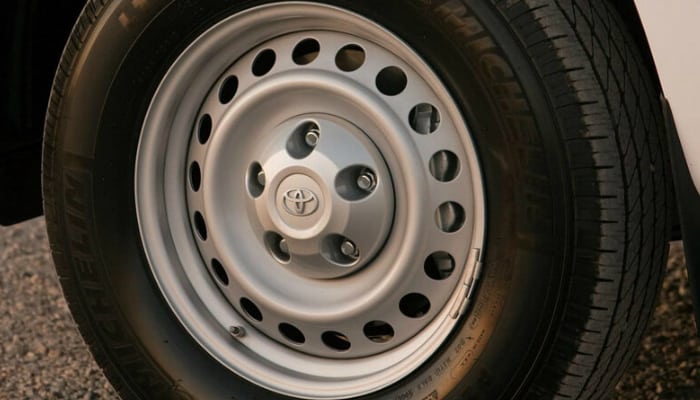
Nonferrous alloys do not contain iron, at least not in big amounts. They are more expensive because they are just simply better than ferrous alloys in many ways. They can resist corrosion, do not have magnetic properties, possess higher conductivity, and are lighter.
Disadvantages
Obviously, alloy wheels have flaws. Yes, they do not corrode but there is definitely a weakness.
Galvanic Corrosion
Alloy wheels can still corrode only if they make an electrical contact with an electrolyte. This is technically called galvanic corrosion. When the wheels encounter this problem, they trigger air leak from the tire. That’s why you also have to know how to check tire pressure as part of your regular maintenance to spot subtle leaks.
Expensive
In the case of repairs, alloy wheels are more difficult to fix than steel. When it comes to replacement, their price is outrageously high that you would prefer repair. No wonder many thieves see alloy wheels as an irresistible source of money. Thankfully, manufacturers already countered this issue by installing lug nuts that cannot be removed unless you use their special key.
Rare
Alloy wheels are so difficult to produce in massive quantities that they are not considered as standard parts for common cars. They are usually add-ons or part of a service package most of the time. However, they are a must for sports cars.
Summary
Alloy wheels may not be popular for massive car productions because of the meticulous processes and expensive materials needed to create them, but they are better than the commonly used steel wheels in so many ways. They are stronger yet lighter, not susceptible to corrosion, and excellent conductors of heat. It is all up to your budget in order to own a set of alloy wheels.
On the other note, in choosing a quality tire, you may check out our take on the best all-season tire.

